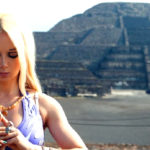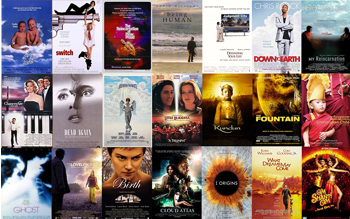Tibetan Buddhism holds that there are two ways that someone can take rebirth after death. The first is to be reborn involuntarily, under the sway of ‘karma’, drawn back to life by destructive emotions and desires. This is the fate of most of us. A few, select others, through the power of compassion and prayer to benefit others, are believed to be able to choose their place and time of birth as well as their parents.
The process of identifying these reincarnates, or “tulkus” as they are known, is a unique mixture of magic and politics.
In a monastic society, where celibacy was the rule, it has served for more than 900 years not only to affirm the Buddhist teachings of a realised soul choosing the circumstances of their rebirth for the benefit of mankind; it also ensured a continuity of spiritual and political hierachy.
It is an inexact science, practiced in different ways across the four main schools of Tibetan Buddhism.
The Karmapas, who introduced the system of identifiable reincarnation in the 11th century, are unique in leaving a letter of prediction before their death, specifying where their next incarnation will be found. In other lineages, identification will usually involve a mixture of dreams, divinations and the consulting of oracles.
Dozens of lamas are held to be tulkus (meaning “Buddha’s Emanation Body”), but of these the Dalai Lama is by far the most important and the best known.
The son of a farmer, he was discovered when he two years old, following a number of signs, which he recounts in his autobiography. The first concerned the embalmed body of his predecessor, the 13th Dalai Lama who died at the age of 57 in 1933. During its period of sitting in state, the head was discovered to have turned from facing south to north-east.
Shortly afterwards, the Dalai Lama’s Regent, himself a senior lama, had a vision. Gazing into the sacred lake of Lhamoi Lhatso, he saw the Tibetan letters Ah, Ka and Ma, followed by an image of a three-storey monastery with a gold and turquoise roof. Finally he saw a small house with strangely shaped guttering. The letter Ah led him to conclude the reincarnation would be found in the north-eastern province of Amdo.
A search party duly travelled to the region, arriving at Kumbum monastery – indicated by the letter Ka – which was three-storeyed with a turquoise and gold roof. A search of the neighbouring villages led them to the house with strangely shaped guttering where the young Lhamo Dondrub, as he was then known, was found.
There the child was given a traditional test of being presented with a number of items, including a bowl and prayer-beads, that had been that had been owned by his predecessor, mixed in with several similar items that had not. In every case the child correctly identified those belonging to the 13th Dalai Lama, saying ‘It’s mine. It’s mine…’
The boy was taken to Lhasa and formerly installed as the Dalai Lama in the Potala palace. It was there, according to one story, that one day exploring with an attendant he came upon a box and pointed to it, exclaiming “My teeth are in there!” Inside, were the dentures belonging to his predecessor.
The Dalai Lama has said that being a tulku is like being a raw diamond – not worth much until it is cut and polished by teachings and practice.
He has also expressed caution about the process to select the next Dala Lama following his death.
In 2011 he issued a set of guidelines, “so that there is no room for doubt or deception”, clearly designed to prevent the Chinese trying to seize hold of the process of recognising his successor, as they did in 1995 with the 11th Panchen Lama, and installing their own puppet candidate. The child recognised as the Panchen Lama by the Dalai Lama vanished from the public eye shortly after his selection, and his present whereabouts are unknown.
In his guidelines the Dalai Lama stated that when he is “about 90”, he will consult with other high lamas and the Tibetan public and re-evaluate whether the institution of the Dalai Lama should continue or not. If it is decided it should, he will leave clear written instructions on the recognition being carried out “according to past tradition”.
This, he has hinted, could include the metaphysically tortuous possibility of manifesting himself as “an emanation” in another body while still alive, effectively choosing an adult successor in his lifetime, rather than reincarnating in a child born after his death.
“Bear in mind,” he concluded, “that, apart from the reincarnation recognized through such legitimate methods, no recognition or acceptance should be given to a candidate chosen for political ends by anyone, including those in the People’s Republic of China.”








